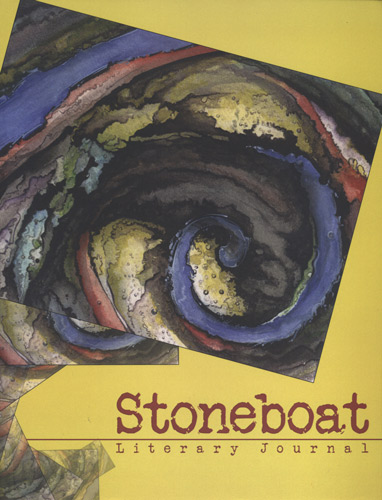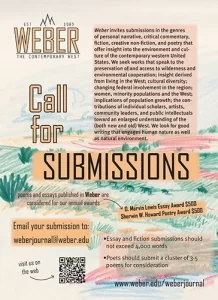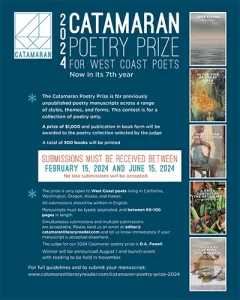Stoneboat – 2015
Jumping into Stoneboat, this issue is kicked off by CL Bledsoe’s poem, “The Squeaky Wheel Has Been Anesthetized.” At the end of the poem the speaker says, “[ . . . ] upsetting. I know we’re all dying at our own pace, / just trying to find a comfortable place to lie down.” The ending of the poem links back to the title’s anesthetization, as well as showcases the poem’s buried rhymes, while working as a good opener for this issue. Jumping into Stoneboat, this issue is kicked off by CL Bledsoe’s poem, “The Squeaky Wheel Has Been Anesthetized.” At the end of the poem the speaker says, “[ . . . ] upsetting. I know we’re all dying at our own pace, / just trying to find a comfortable place to lie down.” The ending of the poem links back to the title’s anesthetization, as well as showcases the poem’s buried rhymes, while working as a good opener for this issue.
Perhaps my favorite thing about Charles Trimberger’s poem, “Peshtigo River Food Chain (August, 1990),” is the interplay between internal and slant rhymes, which are most notable in the lines: “taloned blades slicing / ocean of air, droplets hail / the crowning blow.” The slanted rhyme of “air” and “hail” grate against the long O’s of “taloned,” “crowning” and “blow.”
Among the many poems Stoneboat has to offer is “Lessons from Rain Storms,” in which Harmony Button creates new and invigorating words in an attempt to aptly describe the feelings provoked by the atmosphere, “an expression: this joy-woe? a hunger-sad? If / you feel as if the rain is laughing, you are wrong.” The unique poem is broken into number sections, with each section weighing a new lesson.
Elya Braden carries on this feeling of newness in “Suburban Mermaids,” a fun, fast-paced poem exploring the imagination of young girls as they swim in their backyard pool at night, pretending to be mermaids. They:
greet one-eyed
flounder, waving sea-anemone, luminescent viper fish,
and gather diamonds, rubies, sapphires drifting
in swirls and eddies, waiting to be plucked
by our avaricious hands until our lungs bloom
with need [ . . . ]
On par with the beautiful imaginings, the rhythm of the poem captures the boisterous energy of youth, and you can almost tap your fingers to the beat!
Moving in another direction is “Keurig” by Caleb Nelson, in which the speaker equates himself to a growing pile of empty coffee cartridges. The Dutch version of the word “Keurig” applies to something that is marked by order, having nothing extraneous, much like the speaker in the poem who strives for order: “forever. I don’t know what anyone is after. I just want to press one button / and have my cup quickly filled.”
Lori Lamothe’s “Rapunzel Gets a Buzz Cut” plays off the old cliché that one cuts their hair when they want to change. While the sentiment may be cliché, the poem is anything but. Throughout the poem the hair grows to mean more than just itself, but becomes an idea that transcends itself, encompassing lust and entanglement, fantasy and darkness, “or maybe only a question about what the world / would be if I shaved identity down to essence—pressed my lips to the marrow of winter / and drank the clarity only absence can brew.” With the hair gone, all becomes clear.
Apart from the great poetry this issue, there are three pieces of fiction and two in nonfiction. In fiction, Jessica Walker pens “Revolution Again and Again,” a quick-paced story about an American girl teaching in Moscow, who finds herself kidnapped and fighting to break free. Written from the point of view of the American narrator, we are yanked along the brisk pace as her thoughts race, slowing down only when safe; “Timing is the most important thing. I pretend to sleep, take on the appearance of most vulnerability. Unpredictability is the best advantage of the powerless.”
In nonfiction, Stephanie Anderson’s piece “Dust” follows the narrator as she deals with both the past death of her mother, and the more recent death of her sister:
and as I cried, I was somewhat grateful for my tears, that recognition, that ability to understand the magnitude of a life, its footprint, its fragility, its brave relinquish of eternity in exchange for a small trifle of existence from which voices are born, words that will survive.
Everything came from dust, and everything will one day return to dust.
This issue features “Hiroshima: The Occupation Period,” a gripping photo essay by Mariko Nagai that combines emotion-inducing photography with heart-gripping prose and cover art by Gordon Gohr, designer of the group Solid Ground, which guides adults living with dementia through art exploration. Dedicated to my long time love Mr. Spock, this issue of Stoneboat is sure to entice a broad spectrum of readers.
[www.stoneboatwi.com]





